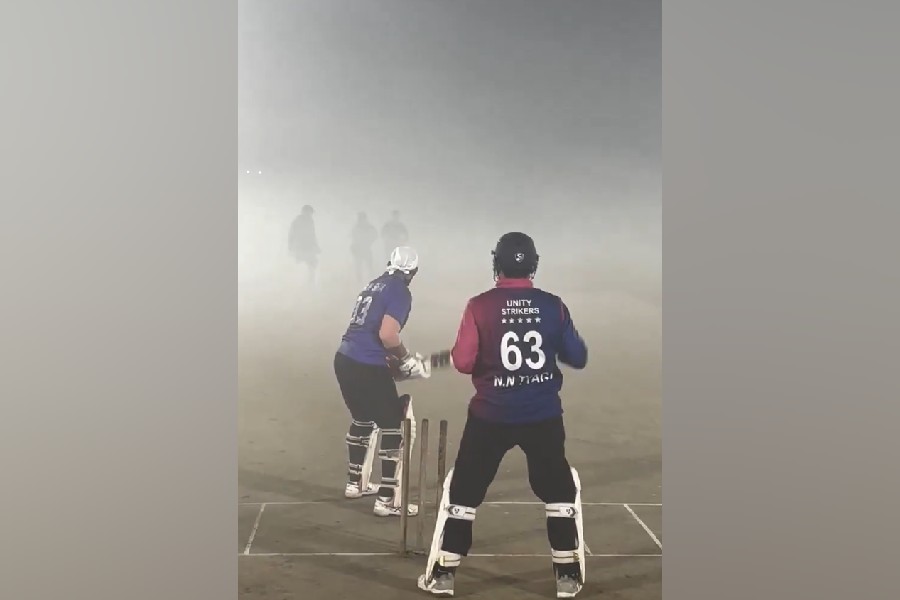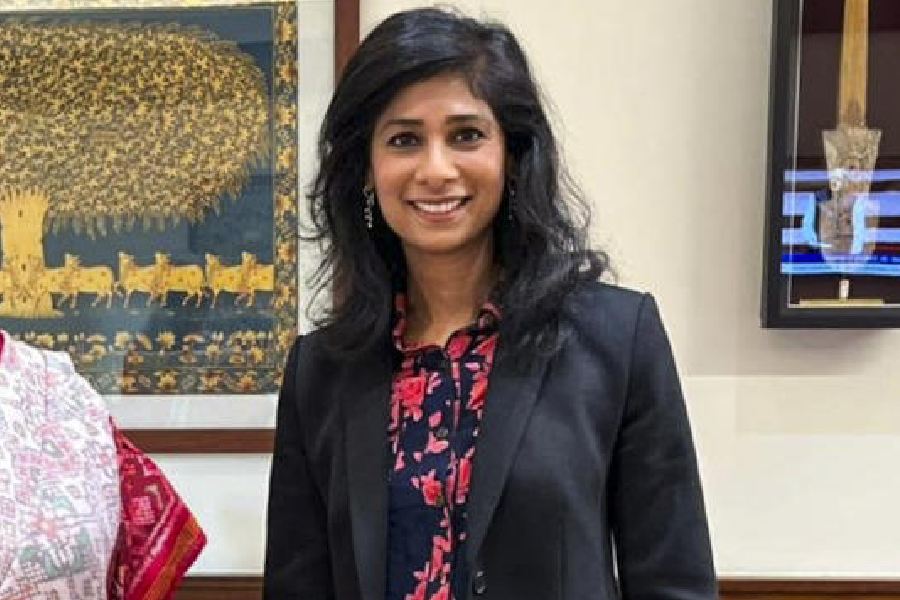Two months ago, Kerala Government officials had sounded briskly confident that they had the coronavirus under control. On May 12, daily new infections had peaked at 43,529 and after that, numbers began moving steadily downwards. Over the next two to three weeks, officials insisted, cases would fall further and the second wave would be largely history.
That optimism has proved premature. India’s medically best-equipped state is still struggling to wrestle the pandemic to the ground. Since troughing at 8,063 new daily cases in late June, the infection curve has moved steadily upward.
The latest figures show Kerala accounting for over half the national caseload -- 22,056 cases out of 43,132 nationally on Wednesday. And that’s despite 35 per cent of the state's population having received their first vaccine and an impressive 16 per cent both jabs (way above the 8 per cent rate nationally). So what’s going on?
At one level, there’s the view that the state’s high caseload may just reflect its diligence in detecting new cases. Says virologist Shahid Jameel: “The only answer I can see is Kerala is testing more widely and is reporting honestly -- and trying to keep down mortality.”
Some experts, though, say more investigation is needed to see if other factors are at play. Says Sulphi Noohu, president-elect Indian Medical Association, Kerala wing: “We definitely need to study if there’s some other factor. Possibly, more genomic testing is called for” that might detect new variants, for instance.
Inevitably, there’s the fear the Kerala cases could spread to neighbouring states or to other parts of the country and trigger a devastating third wave. Alarmingly, seven out of 14 Kerala districts have seen infection levels rising in the last four weeks. The state’s imposing a two-day lockdown over the coming weekend but experts say stricter movement curbs may be needed.
Low mortality numbers
Puzzlingly, cases have been rising despite the fact the state has done just about everything right with its “war rooms” that collect data on hospital beds and monitor patients. At the peak of the Covid-19 crisis, it was able to keep deaths at a low level and even now its mortality numbers are lower than other states, Kerala has an ageing population and there are a huge number of people who suffer from diabetes and other comorbidities.
For example, Kerala on July 29 had 22,056 Covid-19 cases and Maharashtra had only 6,857. But Kerala had 131 deaths compared to Maharashtra’s 286.
In fact, the argument widely accepted by even eminent virologists like Gagandeep Kang is Kerala may be a victim of its own success in not letting the pandemic accelerate out of control. This, experts say, is suggested by the latest seropositivity studies which track the number of people who have Covid-19 antibodies. In Kerala, only 44 per cent have antibodies compared to 67 per cent nationwide. The downside is it means a larger chunk of the Kerala population is still vulnerable to the infection and hitherto uninfected people now are catching the virus. Nationally, Madhya Pradesh leads the way with 79 per cent seropositivity.
Then, look at Covid-19 case detection. The ICMR (Indian Council of Medical Research) serosurvey concluded India nationally has detected only one in 33 cases. Kerala, by contrast, has been able to capture one out of six. Maharashtra, the other state with a huge number of cases that are just coming down, is reckoned to have detected one out of 12 cases. While last year it was testing between 50,000 and 70,000 people daily, on one day this week tests touched 199,000. The Kerala government insists its ‘cluster’ testing is way more effective than what’s done in most of India. Cluster testing involves testing everyone who has had contact with a patient.
Some slip-ups nevertheless
But there have been slip-ups in Kerala’s Covid-19 handling just as in other parts of the country. The state relaxed social-distancing controls, first for local and then state-level elections. Last year, during Onam, the state’s main festival, people who’d stayed inside carefully suddenly got into socialising mode. Worryingly, Onam’s just round the corner now in August and officials are expecting a spike in the weeks following.
Still, so far, the state has coped well despite heavy odds, State government officials point out there’s never been a bed shortage in general wards or in ICUs even during the devastating second wave. Also, Kerala, which had the existing advantage of good healthcare infrastructure, had plenty of oxygen and there has never been a risk of a shortage unlike in many other parts of India where people died for lack of oxygen.
In fact, the state government drew up elaborate plans for the pandemic soon after it received India’s first patient in January 2020 – a medical student back from Wuhan. The planning included rigorous surveillance. For instance, the “route maps of all persons who tested positive were published and all primary and secondary contacts traced.” The police force was famously pulled in to control borders.
Initially, the state’s efforts were so successful it won praise from the world’s press and the-then state health minister K. K. Shailaja made it to Vogue magazine’s Women of the Year list. But the numbers began to climb when people returned to the state from other parts of India. Some state government officials had expected the first wave to end around December but that didn’t happen.
What’s the way forward? One proposed answer is for a long lockdown but the state government’s desperate to avoid that option because the economy’s already taken a big beating. There’s no big industry and many Kerala families are dependent on remittances that have slowed sharply due to Covid. Many people have lost Gulf jobs and others have been unable to return there. Dubai, for instance, isn’t taking people. At another level, small shopkeepers have also been hit. Says health policy expert and ex-UNDP senior advisor Pramod Kumar: “Kerala’s a consumer state and the consumption engine is remittances.”
One control step Kerala chief minister P. Vijayan’s just announced is that only 50 per cent of government employees will be called into the office on many days. Also, micro-containment zones have been introduced.
Lockdown only option?
But these are seen as halfway measures. Jameel believes a lockdown may be the only way to bring the virus to heel. “They should consider it, at least for the top districts: Ernakulam, Mallapuram and Kozhikode,” he says. Mallapuram has been showing a 17 per cent test positivity ratio while the average test positivity ratio in the state has risen to 12.1 per cent. (Contrast that with the 0.08 per cent positivity rate of New Delhi which was devastated by the second wave).
There’s another risk to not locking down fully, Jameel points out. “The approach of letting people get infected while preventing deaths is risky because 10-to-30 per cent of those infected, even asymptomatically, develop Long Covid,” creating persistent health problems like fatigue, respiratory problems or chronic pain.
Initially, it was thought that ‘herd immunity’ would kick in at around 60 per cent to 65 per cent. But says the IMA’s Noohu: “We need to work out the threshold for herd immunity because we have ‘variants of concern’. It was 60 per cent to 70 per cent initially but now it may be 75 per cent to 80 per cent because of the more contagious Delta.”
Plea for more vaccines
Ultimately, Kerala government officials say vaccination is the only weapon to finally slay the virus and they’re furiously lobbying the Centre for a bigger share of the vaccines available. Kerala Left MPs note that between July 18 and July 24, 1.8 million state residents were jabbed and are asking for 9 million more doses to keep up the pace of delivery. Kerala ran run out of vaccines this week and it has been awaiting a new consignment.
Everyone hopes the situation won’t worsen significantly from here. While cases are rising, the curve has risen more gradually than during the second wave.
Kumar notes that during the 1918 Spanish Flu, “it burnt through faster in the army barracks while in the general population, it took longer.” So, it could simply be that Kerala’s rising caseload means the state is paying the price of having kept numbers at manageable levels and ensuring the pandemic didn’t, at any point, overwhelm its healthcare system.











